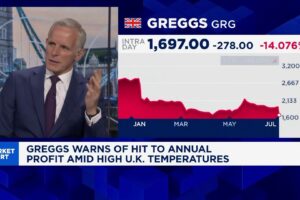
This article is reprinted by permission from NerdWallet.
Rising prices (i.e., inflation) are everywhere you look — on the news, at the pump and in the grocery store. We notice these changes when we reach for our wallets, but it’s difficult to grasp what an extra dollar here or several dollars there mean over the course of several weeks, months or an entire year.
With prices up 8.5% year over year, household spending — that’s yours and mine — stands to rise by several thousand dollars. Even with the Federal Reserve’s attempts to control inflation through interest rate increases, it’s unlikely these prices will fall dramatically. This climb isn’t just a tank of gas or a few additional dollars at the store. For some people, it could be an entire paycheck every month.
Using inflation and annual spending data from the U.S. Bureau of Labor Statistics, we looked at how spending in 2022 will differ from 2020, the last full year when inflation was relatively stable. We chose a handful of categories that many, if not most, Americans spend money on, such as food and electricity. The inflationary impact is remarkable.
Household expenditures could rise by $11,500
In all of 2020, American households spent $61,300, on average. This number includes everything we spend our money on: housing, food, entertainment, clothing, transportation and everything else. In 2022, it stands to reach $72,900, a difference of more than $11,500 if consumers want to maintain the same standard of living. Keep in mind, this is an average, a number that represents an approximation across all Americans, but one that’s exact to a very few. Those who earn (and therefore spend) more will see more dramatic dollar increases. Those who earn less may see less dramatic dollar jumps, but the impact of these rising prices could be more significantly felt.
It’s worth calling out — spending was a bit unusual in 2020. People spent less on commuting, child care and entertainment, for example, and more on home improvements. It’s a safe assumption that people will spend less in certain categories this year too, if for no other reason than avoiding high prices. This is primarily why we think spending in 2022 will be more similar to 2020 than 2019, for example, another year for which such spending data was available.
We can all likely agree that $11,500 is a lot more money to spend in a single year, but grasping what big numbers like that mean in practice can be difficult. Per month, you’re looking at close to $1,000 more. For many people, this is an entire extra rent or mortgage payment.
Across all the spending categories we examined, groceries, shelter and gas stand to rise the most. Throughout all of 2022, if inflation doesn’t slow considerably, we can expect to spend $1,200, $1,400 and $2,500 more on these categories, respectively.
How this situation plays into the recession conversation
The Fed is attempting to bring prices down gently. By raising the interest rate at which banks borrow money, it can control demand in the economy, and with cooler demand comes lower prices. However, these changes can also trigger not-so-great effects such as higher unemployment and slowing the economy too much. It’s a balancing act.
Though a recession may sound scary (and a deep one is), a downturn may be necessary to get prices under control. And as tough as it is to stomach, that part is a good thing.
See: The U.S. economy is not in recession — it’s growing. But for how long?
How to handle high prices and recession talk
Look at the big picture
As explained above, there is a silver lining to an economic downturn or recession — prices fall. While the Fed attempts to achieve this outcome with a minimally negative impact, doomscrolling news websites and listening to overly simplified hot takes on social media will do absolutely nothing to protect you. Keep calm. Bolster your emergency savings if you’re able, see if you can tighten up your budget and sit back. Even when it comes to your long-term investments, sometimes the best advice is to relax and do nothing.
Expect to see the effects of rising rates
If you were planning on buying a house or a car in the near future, expect to pay far more for those items if you’re taking out a loan. Banks and creditors pass along their increased rates from the Fed to you, the consumer. Monthly payments will be bigger (perhaps by hundreds of dollars) due to the one-two punch of higher prices and higher interest.
Don’t forget about credit cards — interest rates will climb here too. Now more than ever, do your best to pay off your balances each month. The compounding interest of credit card debt is already high enough to try to avoid, when possible.
Also on MarketWatch: Which is healthiest — an ice-cream cone, a bag of Fritos or a multigrain bagel with raisins? The answer may surprise you.
Budget more for necessary goods and services, temporarily
Revisiting your budget in the current climate doesn’t only involve cutting things out, but figuring out how to accommodate spending more in certain categories. After all, you can’t go without things like groceries. In order to maintain the same volume of groceries you had last year or the year prior, you’ll need to find the extra money. If you didn’t have much wiggle room in your budget to begin with, consider what items you can go without or cut back on. Maybe you can get another year out of that winter coat or cut out one or two streaming services. Framing these as temporary sacrifices makes losing them easier.
More From NerdWallet
Elizabeth Renter writes for NerdWallet. Email: [email protected]. Twitter: @elizabethrenter.








